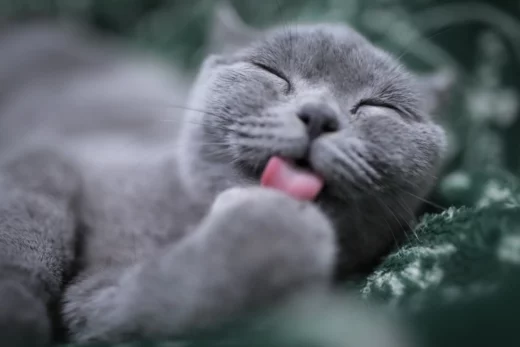The purpose behind tooth brushing
The purpose behind tooth brushing is two-fold: your goal with brushing is to incorporate the benefits of mechanical and chemical means to remove build up of plaque. A toothbrush moved up and down the surface of a tooth provides mechanical action to remove built up plaque and tartar. Using a cat-friendly toothpaste with the toothbrush provides additional enzymes to chemically assist with the removal of plaque. This is why the gold standard used to prevent the accumulation of plaque and calculus is daily tooth brushing.
Remember, brushing your cat’s teeth is just as important as brushing our own teeth to prevent buildup of plaque and tartar!
Although daily tooth brushing at home is rarely practiced in cats, it’s not a reason to give up completely on establishing an at home dental care routine. There are many ways that you can help keep your cat’s mouth healthy and prevent the buildup of plaque and tartar leading to dental disease, which can be painful, expensive, and even life-threatening.
Here are the top 5 ways to “brush” your cat’s teeth:
- Toothbrush with toothpaste
- Dental wipes
- Q-tips
- Diet & Treats
- Water additives
Toothbrush with toothpaste
Choose a cat-specific toothbrush and enzymatic toothpaste. Use a circular motion and focus on your cat’s gum line. Brush the outside and inside surface of the teeth. Start with the outside and build up to the inside once they get comfortable and more accepting. Ellen Carozza, a licensed veterinary technician in a feline-only practice recommends trying a baby toothbrush (0-2 years, step 1). The head of the brush is smaller in length and width than the finger brush and in many cases safer so the cat doesn’t bite the owner.
Dental wipes
In between brushing, dental wipes can help to reduce halitosis and remove plaque build up with mechanical and chemical action. Once you’ve chosen a cat-specific dental wipe, wrap it around your index finger and once over the top to create a finger cap. Use a circular motion and focus on your cat’s gum line and back molars.
Q-tip©
Most cats will permit their caregivers to apply cotton tipped applicator sticks to the area below the gum line to decrease the daily accumulation of plaque. They will tolerate this because it stimulates their natural behavior when they rub against a person or mark their saliva on the property. Tuna water can be applied to the end of the cotton swabbed applicators (Q-tips©) for taste to gain acceptance (Jan Bellows, DVM, FAVD, DAVDC, DABVP). Make sure to select canned tuna packed in water, and not canned tuna in oil or canned tuna with added salt or other flavorings.





